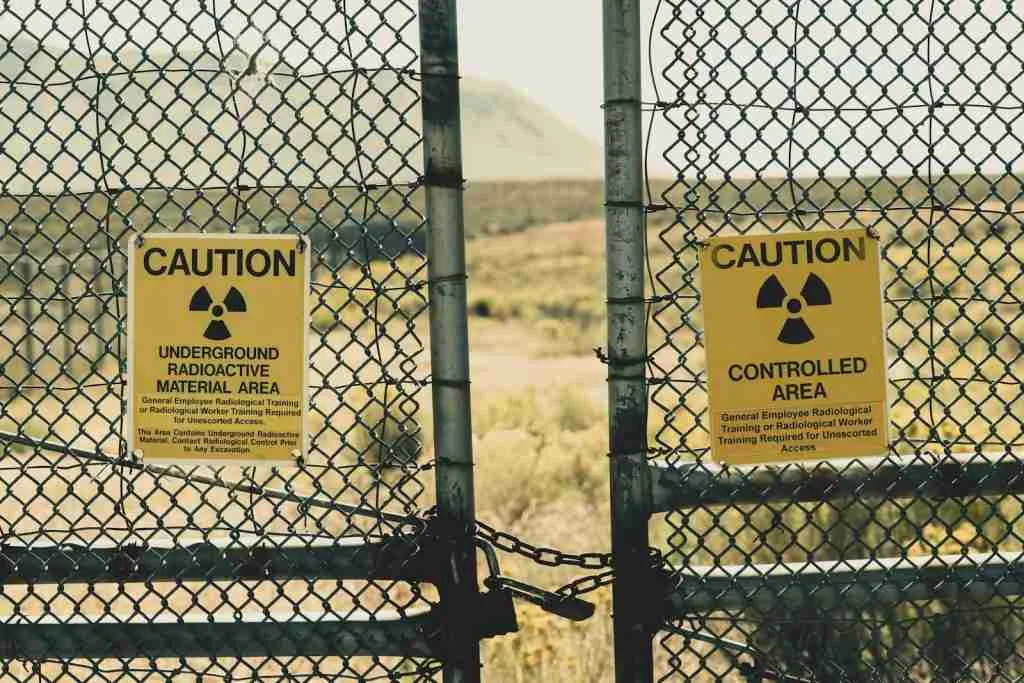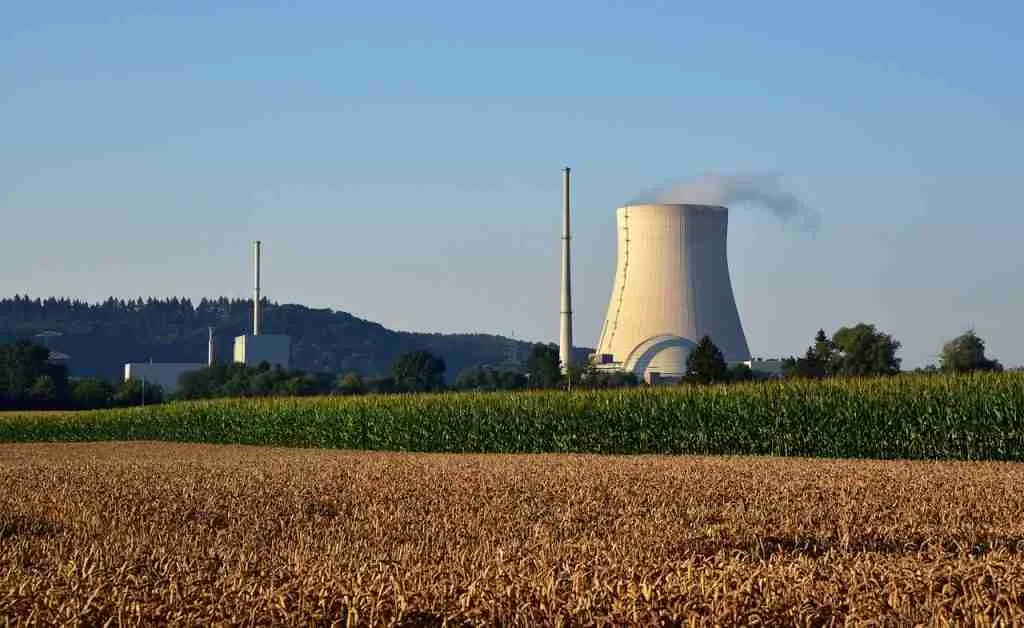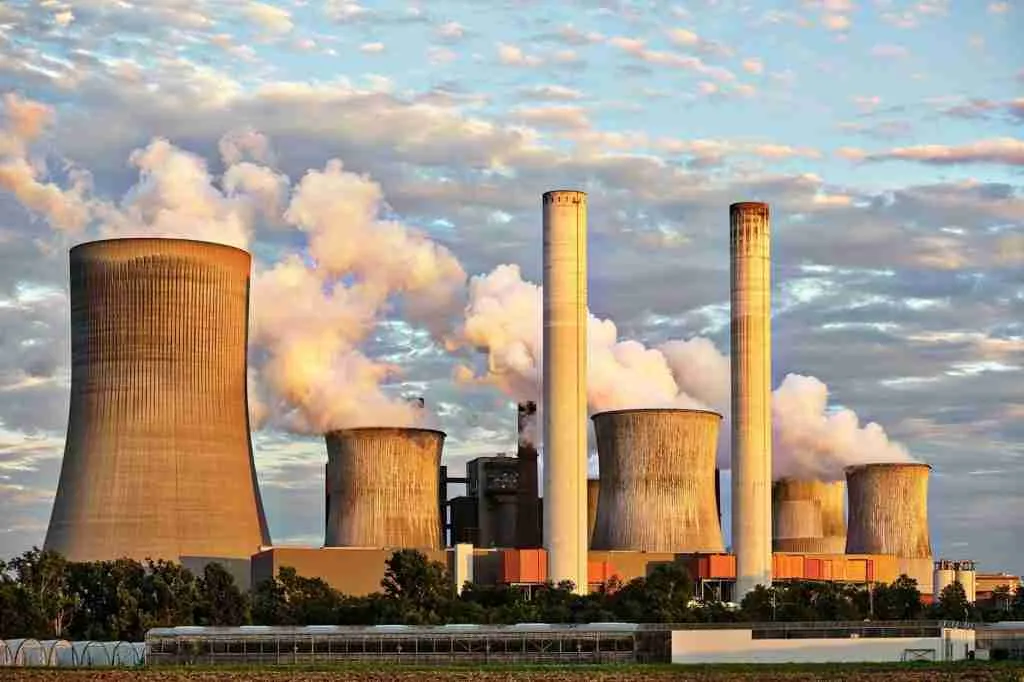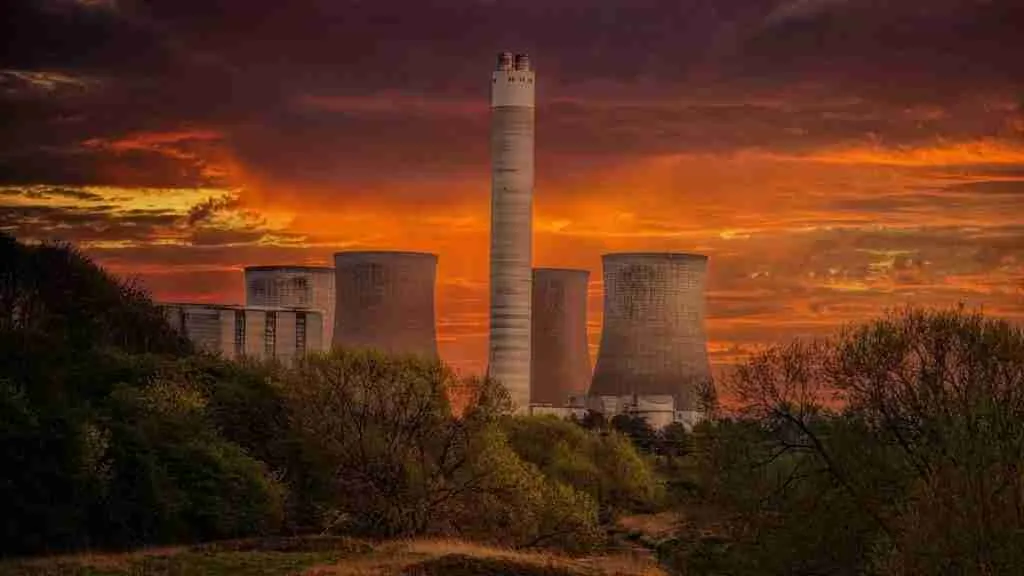25 Interesting Facts About Nuclear Energy (Atom-Powered)
-
Nuclear power plants use less land than any other clean-air energy source.
-
One uranium fuel pellet produces as much energy as one ton of coal.
-
Nuclear reactors can operate for 18-24 months before needing refueling.
-
The world’s first nuclear-powered submarine, USS Nautilus, was launched in 1954.
-
Nuclear energy is responsible for nearly 20% of electricity in the United States.
-
There are over 440 nuclear reactors operating in more than 30 countries worldwide.
-
The waste from nuclear power is 96% reusable.
-
A nuclear reactor in Oklo, Gabon, operated naturally about 2 billion years ago.
-
Nuclear power plants have an average capacity factor of over 90%, the highest of any energy source.
-
The Fukushima Daiichi accident in 2011 led to global enhancements in nuclear safety.
-
Advanced reactors use thorium, a more abundant and safer fuel than uranium.
-
Canada’s CANDU reactors can use spent fuel from light-water reactors as fuel.
-
Nuclear propulsion allows aircraft carriers to operate for 20+ years without refueling.
-
Russia’s nuclear-powered icebreakers allow for year-round navigation in the Arctic.
-
The United Arab Emirates’ Barakah plant is the first nuclear power station in the Arab world.
Table of Contents
1. Nuclear energy is a form of energy produced by the nuclear reaction of atoms.
Nuclear energy is a resource used to generate electricity and create other resources. It’s produced when atoms undergo fission or fusion, releasing large amounts of energy through heat or radiation.
These nuclear reactions result in a reaction chain, which continually releases energy as long as it’s triggered.
2. The First Nuclear Power Plant was built in Obninsk, Russia 1954.
1954 marked an important historical milestone. That year, the first-ever nuclear power plant was constructed in Obninsk, Russia.
It was a groundbreaking feat, forever changing people’s understanding and use of energy. This power plant helped revolutionize not only the Russian energy sector but also the world, as knowledge and equipment concerning nuclear power spread across nations and borders.
To this day, Obninsk is known for its monumental significance in laying the foundations for today’s world, one which runs partially on nuclear energy.
3. Nuclear power plants currently provide about 10% of the world’s electricity.
Nuclear energy is quickly becoming a large source of electricity for the world. Around 10% of the earth’s electricity currently relies on nuclear power plants, making it an essential part of our modern power grid.
This form of energy contributes to providing sustainable electricity on a global scale. It has numerous benefits, such as low carbon emissions and cost efficiency.
With research advancements constantly being made, experts are excited about nuclear power’s potential to bring reliable energy to more parts of the world.
4. Nuclear energy is the world’s Second Largest Source of Low-Carbon power, behind hydropower.

READ ALSO: 22 Fun Facts About Gravity To Wow Your Friends
Regarding low-carbon power sources, nuclear energy is second on the list. It trails only hydropower in popularity worldwide, making it an often sought-after option.
This type of power generation produces almost no greenhouse gases while providing reliable electricity at a potentially large scale. However, careful handling is needed to ensure safety upfront and long-term sustainability during use and following decommissioning.
These benefits set nuclear energy apart from other sources that will likely be used in the global fight against climate change.
5. Nuclear Power Plants do not produce Greenhouse Gases or air pollution.
Nuclear power plants are an effective solution for electricity generation without negative environmental impacts.
These and other renewable resources prevent the release of polluting gases and particles, such as carbon dioxide, which can exacerbate air quality concerns prevalent in many parts of the world.
Without relying on fossil fuels and other nonrenewable sources, nuclear power plants are better for reducing overall hazardous substances in the atmosphere that could challenge human health and lead to climate change if left unregulated.
6. The heat from about 10 uranium pellets can power a home for a year.
The heat from about 10 uranium pellets can power a home for a year, illustrating the exceptional energy efficiency of nuclear power. This efficiency arises from uranium’s high energy density, making it the most potent fuel source available.
Each uranium pellet produces as much energy as one ton of coal, 120 gallons of crude oil, or 17,000 cubic feet of natural gas. According to the U.S. Department of Energy, a single uranium pellet contains around 17 million British Thermal Units (BTU) of energy.
This remarkable efficiency, low lifecycle CO2 emissions, and a small land footprint make nuclear energy a compelling option for sustainable power generation.
7. Radioisotopes, a byproduct of nuclear energy, are used to sterilize medical equipment and fight cancer.
Radioisotopes, a byproduct of nuclear energy, play a crucial role in sterilizing medical equipment and fighting cancer. These isotopes, such as cobalt-60, are used to sterilize surgical instruments and other medical devices, ensuring they are free from harmful microorganisms. In cancer treatment, radioisotopes are employed in radiotherapy to target and destroy malignant cells.
Radiotherapy uses focused radiation to weaken or eliminate cancer cells, making it an effective treatment for various types of cancer. The ability of radioisotopes to provide both sterilization and therapeutic benefits highlights their indispensable role in modern medicine.
8. Nuclear energy is one of the most Heavily Regulated Industries in the world.

READ ALSO: 25 Fun Facts About Magnetism: Unveiling Mind-Blowing Secrets
The nuclear energy industry is one of the most heavily regulated industries globally. Governments have strict regulations to keep it running as safely and efficiently as possible.
Every aspect must comply with extensive legal frameworks and instructions to minimize risks to personnel and the surrounding environment.
Through diligent management, organizations within this sector are held accountable for their production practices and procedures, enabling them to ensure the safety and security of all concerned.
This oversight extends beyond national borders and is supported by various international bodies whose watchful eyes maintain high standards from land and sea.
9. Nuclear power plants use fuel made of Enriched Uranium or Plutonium.
Nuclear power plants provide an abundant source of non-emitting electricity. However, specialized materials are required to create this energy.
These materials consist of enriched uranium and plutonium, chemical elements that are manipulated to enhance their reactivity, generating heat to power nuclear reactors.
Such chemical products enable electricity to be generated without requiring still scarce fossil fuels like coal, resulting in a lowered local carbon footprint and decreased global temperatures.
10. Nuclear accidents, such as Chornobyl and Fukushima, are rare but can have severe consequences.
Nuclear accidents do not happen frequently, but their effects can be damaging when they do occur. Chornobyl and Fukushima are stark reminders of the potential destruction of highly hazardous events.
Even though these incidents are unique, countries worldwide have learned from them and enacted rigorous procurement policies to prevent future disasters.
Sadly, even small safety violations have proven deadly since such processes involve extremely poisonous materials with nowhere for contamination to go but out into the environment and collapse inevitable fallout patterns.
11. Nuclear waste must be stored safely for thousands of years.
Storing nuclear waste is a significant challenge, as it must remain safely contained for thousands of years. The waste must be able to endure until it has safely decayed and no longer poses a threat to the environment.
With this in mind, careful planning and sophisticated infrastructure must be maintained to contain hazardous materials for a long time.
Significant international partnerships are necessary to properly dispose of such waste and facilitate research to reduce environmental impact.
12. Nuclear weapons and Nuclear Power are different uses of nuclear technology.
READ ALSO: 20 Interesting Facts About Higgs Boson (The God Particle)
Storing nuclear waste is a significant challenge, as it must remain safely contained for thousands of years. The waste must be able to endure until it has safely decayed and no longer poses a threat to the environment.
With this in mind, careful planning and sophisticated infrastructure must be maintained to contain hazardous materials for a long time.
Significant international partnerships are necessary to properly dispose of such waste and facilitate research to reduce environmental impact.
13. Nuclear energy is considered a climate change solution.
Nuclear power plants are like silent warriors in the climate battle. They churn out massive amounts of electricity without spewing greenhouse gasses, a major culprit in global warming. This clean energy potential is undeniable.
However, questions linger about the long-term storage of radioactive waste and the possibility of accidents, even though modern reactors boast advanced safety features.
The debate continues, but one thing’s for sure: nuclear energy’s role in combating climate change hinges on finding the right balance between clean energy production, robust safety measures, and responsible waste management.
14. Nuclear fusion, which powers the sun, is being researched as a potential future energy source.
For centuries, our sun has shone with a vibrant, eternally burning flame that scholars believe is powered by an energy source of nuclear fusion.
As the demand for renewable and sustainable green energy sources becomes increasingly real, scientists are now exploring the same process found in our star.
Nuclear fusion is being investigated as a potential future energy source that may eventually provide reliable power for the world’s electricity needs and life-sustaining resources.
Utilizing something found ubiquitously throughout nature opens possibilities for revolutionizing humanity, unlocking innovation, and fueling society with friendship for all.
15. There are 444 nuclear power plants worldwide, providing about 11% of the world’s electricity.
Currently, 444 nuclear power plants are operating globally, contributing to about 11% of the world’s electricity supply. These plants are crucial in providing a stable and reliable power source, especially in countries where they represent a significant portion of the energy mix.
Despite their small numbers compared to other power generation facilities, nuclear plants’ high energy output allows them to play a major role in meeting global energy demands.
16. Nuclear energy is reliable because it generates electricity 24/7.

READ ALSO: 22 Fun Facts About Mercury | Celestial Wonders
Nuclear energy is an incredibly reliable source of electricity. Unlike solar or wind energy, which relies on cyclical weather patterns, nuclear energy can generate electricity on demand—at any time, day or night.
Utilizing this technology allows unprecedented control over the generation and availability of power. Nuclear also offers a steady power supply compared to renewable sources that intermittently produce varying levels of electric output as the environment changes.
This ensures a much more consistent resource for the constant operation of industrial processes and saving lives through essential services like healthcare.
17. Nuclear energy can be a more cost-effective option than renewable energy sources like solar and wind power.
Nuclear energy is often seen as a more cost-effective option to generate electricity than renewable sources like solar and wind power.
This is mainly attributed to lower capital costs associated with nuclear plants, in which reactors may pay off their construction debt quickly.
Nuclear plants have higher generations of reliable power at consistently low costs than renewables, even when environmental factors like sunshine or wind speed fluctuate.
In other words, nuclear energy offers consistent output that can outperform renewable energy sources.
18. Nuclear energy is a dense energy source, meaning a small amount of fuel can produce a large amount of electricity.
Nuclear energy has a lot more potential than its size suggests. One of its awesome properties is its ability to produce vast amounts of electricity with just a tiny amount of fuel.
Its density means that it has the capacity to generate large amounts of reliable power despite being self-contained in a small area.
This allows countries to access large amounts of electricity that can be used for public service and various industries.
19. Nuclear power plants use a process called nuclear fission to generate electricity.
Nuclear power plants employ a method called nuclear fission to create electricity. This process involves splitting and then combining atomic particles, which ultimately generate energy.
This energy is harnessed and transformed into electricity, which may be used for various everyday products and utilities homes rely on, such as lighting, heating, and other machinery, such as refrigerators.
The benefits of using nuclear fission for electricity are that it is an inexpensive and efficient source of power that does not require the carrying or burning of physical fuels like wood, coal, or oil.
20. Nuclear power plants can desalinate seawater, providing fresh water in arid regions.

READ ALSO: 29 Fun Facts About Nervous System | Electric Facts
Nuclear power plants have the capability to desalinate seawater, providing essential fresh water in arid regions. For nearly 30 years, the International Atomic Energy Agency (IAEA) has aided countries in enhancing their water supply, quality, and access through nuclear desalination.
This process utilizes the heat and electricity generated by nuclear reactors to remove salt and minerals from seawater. Techniques such as distillation and membrane separation are primarily used in this process.
21. France generates over 70% of its electricity from nuclear energy.
France generates about 70% of its electricity from nuclear energy due to a long-standing policy focused on energy security. This approach has made France a leader in nuclear power generation. However, a policy set by a previous administration in 2014 aimed to reduce nuclear’s share to 50% by 2025.
This planned reduction reflects a strategic shift towards diversifying the country’s energy mix. Despite this, nuclear energy remains a cornerstone of France’s electricity supply.
22. The ITER project aims to create the world’s largest magnetic confinement plasma physics experiment for nuclear fusion.
ITER (International Thermonuclear Experimental Reactor), a collaborative effort by 35 nations, is building the behemoth of magnetic confinement fusion experiments. This megaproject in southern France aims to replicate the process that powers stars here on Earth.
By heating isotopes of hydrogen to scorching temperatures within a powerful magnetic field, ITER seeks to achieve a sustained fusion reaction, a potential future energy source that would be clean and virtually limitless.
23. In 2022, nuclear power plants generated 772 billion kilowatt-hours of electricity.
Nuclear power packs a punch. In 2022 alone, these plants churned out a staggering 772 billion kilowatt-hours of electricity. That’s enough to power tens of millions of homes and represents nearly a fifth of the total electricity generated in the United States.
This clean and reliable energy source plays a significant role in keeping the lights on nationwide.
24. Mars rovers, like Curiosity and Perseverance, are powered by radioisotope thermoelectric generators.

READ ALSO: 22 Fun Facts About Gravity To Wow Your Friends
Mars rovers like Curiosity and Perseverance aren’t tethered to the sun. They use radioisotope thermoelectric generators (RTGs) for power.
These clever devices are mini nuclear batteries that convert the heat from decaying plutonium-238 into a steady stream of electricity, keeping the rovers humming along even on frigid Martian nights.
25. The risk of accidents at nuclear power plants is low.
While the potential consequences of a nuclear accident are severe, the likelihood of one occurring is surprisingly low. Modern nuclear reactors have multiple safety features, including redundant cooling systems and automatic shutdowns that kick in if overheating is detected.
Additionally, strict regulations and rigorous training for personnel ensure these facilities are operated with the utmost care. This layered approach significantly reduces the chances of a serious incident.
FAQs
Nuclear energy is extremely powerful and capable of generating large amounts of electricity from small amounts of fuel. A single uranium fuel pellet produces as much energy as one ton of coal or 17,000 cubic feet of natural gas. This high energy density makes nuclear power a highly efficient and potent energy source.
Nuclear energy is not considered renewable because it relies on finite resources like uranium. However, it is often categorized as a low-carbon energy source. Advanced technologies, such as breeder and thorium reactors, aim to use nuclear fuel better, potentially extending its availability.
Nuclear energy was pioneered by scientists such as Enrico Fermi and Leo Szilard. Fermi achieved the first controlled nuclear chain reaction in 1942. Their work laid the foundation for both nuclear power generation and atomic weaponry.
The nuclear energy source is the atomic nucleus, primarily through nuclear fission and fusion processes. Heavy atomic nuclei such as uranium-235 or plutonium-239 are split in nuclear fission, releasing significant energy. Nuclear fusion, which powers the sun, combines light atomic nuclei, like hydrogen isotopes, to release energy.
Nuclear power is highly successful, providing about 10% of the world’s electricity. It is a reliable and low-carbon energy source, with over 440 reactors operating globally. Countries like France rely heavily on nuclear power, deriving about 70% of their electricity from it. Nuclear power also has a high capacity factor, meaning it produces energy consistently and efficiently compared to other sources.





